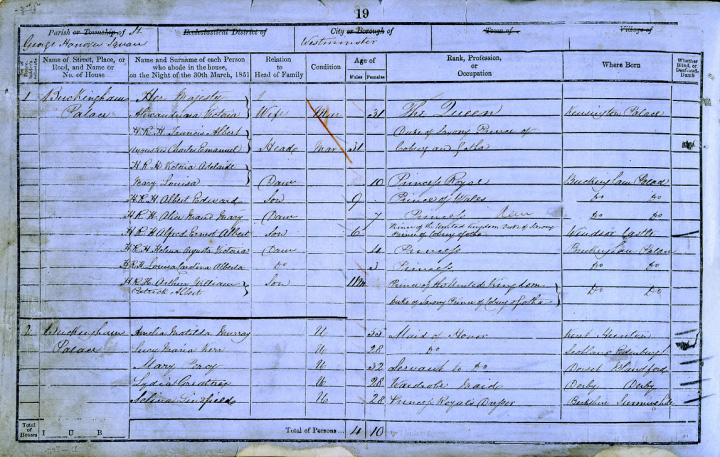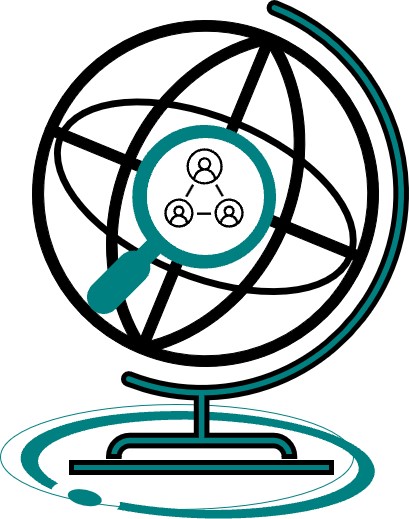
Family history, or what we refer to as genealogy, has become a popular global hobby, both in the creation of family trees and in genetic discoveries (DNA testing). Ancestry has 3+ million paying subscribers and over 125 million family trees, with DNA testing available in more than 60 global markets, while FindMyPast has billions of records available for research. When researching data for a family tree, one of the best pieces of information available to genealogists are the sets of census records that were periodically taken every ten years in both England and Wales.
This week in our “”Beginner’s Guides” series, we delve into the purpose of censuses and how you can discover your own ancestors via the England and Wales censuses.
WHAT IS A CENSUS?
To start off, a census is an official government count or survey of a population which includes a series of details about individuals. A census is documented on a specific date every ten years, and must be submitted during the time period prior to the deadline. The census originated in 1801, but the 1841 census is considered to be the first of modern (and useful for genealogical purposes) U.K. censuses, as it includes details about the individuals.
By the end of this blog, you will have the tools to research your English and Welsh ancestors using the U.K. censuses (with details from the National Archives of the U.K.), as well as other practical information about them to help you unravel your own family history. If you encounter any issues using census records, I’m happy to talk through the conversations and offer advice. You can fill out the Contact Me! form or email me directly at info@shapingyourfamilytree.com.
WHY ARE CENSUSES SIGNIFICANT?
The data recorded about the population by a census is used by a government plan for healthcare, education, and employment services at various national, regional, and local levels. Looking at this from a genealogy standpoint, these historical records can be a great tool in telling your family’s story from a certain point in time.
INTRODUCING THE CENSUS
WHAT CAN BE FOUND IN THE CENSUS?
To achieve a basic understanding of the census, the researcher needs to know that the census may provide a vast array of details about an individual. This includes the individual’s complete name, exact age, relationship to the head of the household, sex and occupation, parish plus their country of origin, medical conditions or disabilities and even their employment status. As the census progressed, more and more information was added, providing even more genealogical information. In addition to decennial censuses, Parliament introduced the initial National Registration Bill of 1939 at the start of the Second World War. It was an emergency measure designed to capture details on every member of the civilian population on a specific date in time (military personnel were not recorded). The National Archives provides a more in depth guide regarding the 1939 Register. https://www.nationalarchives.gov.uk/help-with-your-research/research-guides/1939-register/
THE ENUMERATORS’ BOOKS
Each head of household was obligated to complete a census schedule providing the household’s address, the names, ages, sex, occupations and the place of birth of each individual who resides in his/her respected household. The original censuses (1801-1831) covered counts for specific people and livestock aligning to the head of the household. Census records from 1841 and onwards are the most useful to genealogists.
The recorded date for the census data was as of:
- 1841 – June 6
- 1851 – March 30
- 1861 – April 7
- 1871 – April 2
- 1881 – April 3
- 1891 – April 5
- 1901 – March 31
- 1911 – April 2
- 1921 – June 19
In these surveys, heads of households were requested to provide in-depth details regarding the places of birth of each individual resident, along with the resident’s relationship to him/her, their marital status and the extent of any disabilities they may have suffered. An enumerator, a professional who compiled the data of census-related activities, then collected the census surveys which were then copied into the census enumerators’ books, corresponding to their enumeration district. These details were grouped along a specific route. It was possible a road was split over a series of folios containing other streets. The description of the route can be found on the first sheet of each enumeration district. Street indexes should list several series of folio references. The Historical Street Project is an archived site, which can be used as an aid for streets’ names.
Despite the fact that the original census schedules were destroyed, these enumerator books were kept and preserved at The National Archives. In 1970, these books were subsequently digitized in order to prevent the steadily increasing usage of the books from damaging the fragile records.
While you may stumble across the rare occurrence of a torn or partially damaged page, the records have generally survived in astonishing condition bearing in mind the heavy amounts of usage they have experienced over the years.
HOW TO USE THE CENSUS
Now that you understand the details within the census , let’s go over how you can apply the census to your own genealogy research. As previously stated, The National Archives maintains the complete collection of all historical census records online in relation to the United Kingdom, spanning from 1841-1921 (releasing to the public 100 years after the census was originally issued). On The National Archives webpage, you will be able to locate links to their partners webpages, Ancestry and Findmypast, which provide the records to subscribers (charges apply).
PEOPLE IN THE CENSUS RECORDS
In the following table you will be able to find an organized list of information recorded on individuals from each year’s census data. Note: the questions asked on schedules for institutions and vessels differ based on the year and location the census was recorded.
In the 1911 census, all household schedules were kept for the very first time and not copied into enumeration books. Instead, there are enumerators’ summary books which contain lists of every address, including unoccupied buildings, and with names of the heads of each household. Inside these summary books, descriptions of each building are recorded. Unoccupied houses as well as non-residential properties, churches and factories, are also recorded.
In the 1921 census, there were also household schedules, but there are no enumerators’ summary books, as was present in 1911. Instead, ‘Plans of Division’ were introduced, which describe the boundaries and information found in each enumerator district.
The 1921 census removed questions regarding the length of the present marriage, and the number of children born within it as was the question on infirmity or disability.
| CENSUS YEAR | QUESTIONS |
|---|---|
| 1841 |
|
| 1851 + 1861 |
|
| 1871 + 1881 |
Same as 1851 + 1861, except for a slight difference:
|
| 1891 |
Same as 1871 + 1881 with the additional extra information regarding employment:
|
| 1901 |
Same as 1891 with updates to occupational details:
|
| 1911 |
Sames as 1901 with additional questions:
|
| 1921 |
Changes to existing questions:
New questions added:
|
WHEN WILL MORE CENSUS RECORDS BE RELEASED?
Because of U.K. privacy laws, census records can only be released to the public 100 years after the original date the census was recorded. The next available censuses for England and Wales will be starting with 1951 (100 years later in 2052). The census for 1931 was destroyed by fire and the 1941 census was not conducted due to the war (thus the importance of the 1939 Register, noted above).
Follow this Beginner’s Guide blog series as I provide information next on census records for Scotland and then for Northern Ireland (part of the U.K.) and Republic of Ireland (which split from the U.K. in 1922).
Image reference:
Census Records. U.K. Buckingham Palace, London. 30 March 1851. The Queen. HO 107/1478. https://www.nationalarchives.gov.uk/help-with-your-research/research-guides/census-records/ : accessed 20 November 2022.
